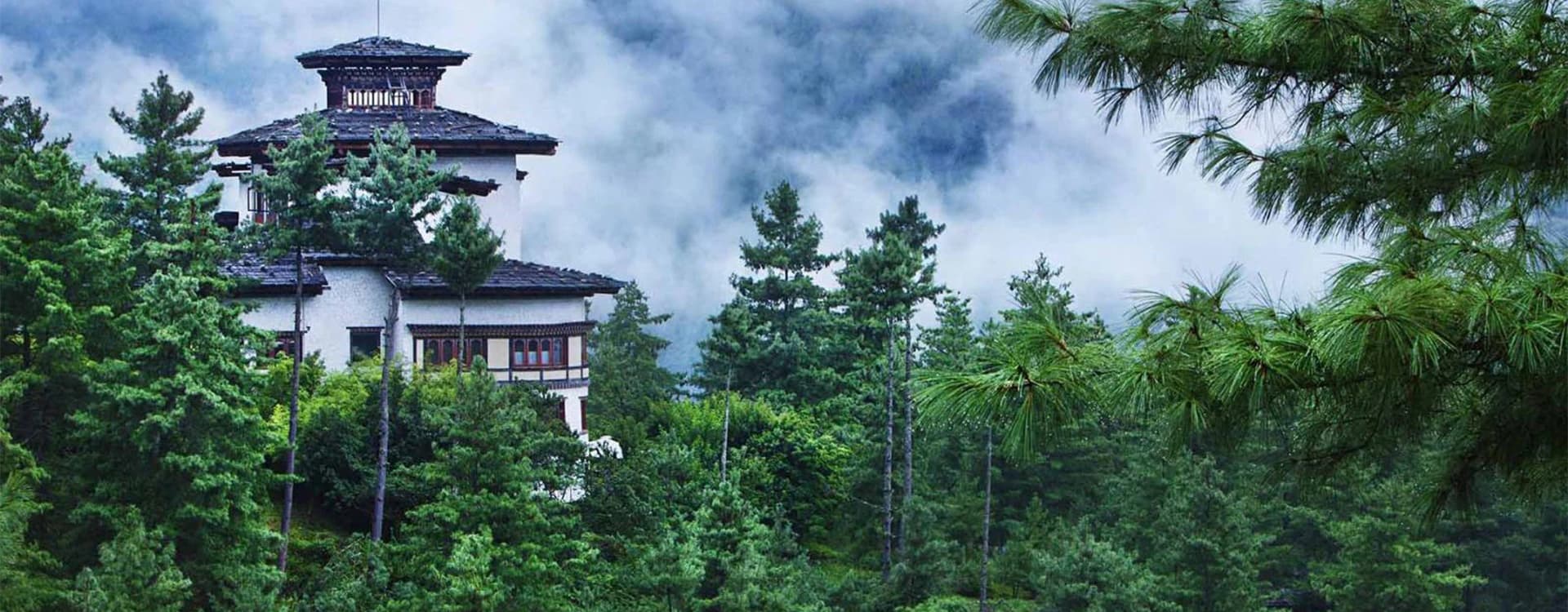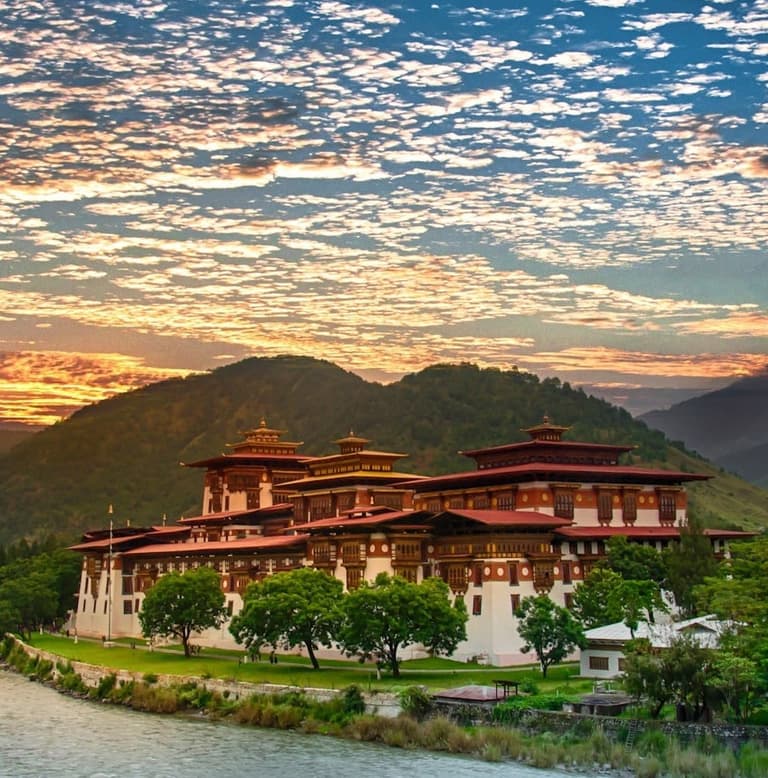Bhutan, officially known as the Kingdom of Bhutan, is a landlocked country in South Asia, located in the Eastern Himalayas. It shares its northern border with China and its southern border with India, while the Indian state of Sikkim lies between Bhutan and Nepal. Covering an area of 38,394 square kilometers (14,824 square miles), Bhutan ranks 133rd globally in land area and is home to over 727,145 people, making it the 160th most populous country. Bhutan is a constitutional monarchy, with the Druk Gyalpo (Dragon King) serving as the head of state and a prime minister leading the government. The Je Khenpo acts as the head of the state religion, Vajrayana Buddhism.
The country's geography is defined by the dramatic Himalayan range in the north, which transitions into lush subtropical plains in the south. In the Bhutanese Himalayas, peaks rise above 7,000 meters (23,000 feet), including Gangkhar Puensum, the world's highest unclimbed mountain. Bhutan’s diverse wildlife includes unique species such as the Himalayan takin and the golden langur. The capital and largest city, Thimphu, is home to nearly 15% of the population.
Bhutan has deep historical ties to Buddhism, which spread from the Indian subcontinent during the Buddha's lifetime. In the first millennium, the Vajrayana school of Buddhism reached Bhutan from Bengal’s Pala Empire. The 16th century saw Bhutan unified under Ngawang Namgyal, who established a centralized state. He successfully repelled Tibetan invasions, consolidated power over rival religious schools, codified the Tsa Yig legal system, and introduced a dual system of governance with both theocratic and civil administrators. Namgyal became the first Zhabdrung Rinpoche, a role akin to the Dalai Lama in Tibet.




